Dr. Yvonne Janssen-Heininger of the University of Vermont’s Dept. of Pathology and Laboratory Medicine grew up in the Netherlands and first discovered her love of lung research as an undergraduate, when she looked at different organ tissues under a microscope. Yvonne and her team currently investigate the role of redox biology and fibrosis in the lungs to elucidate pathology mechanisms and to develop novel drugs to treat chronic lung disease. 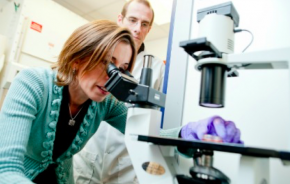
Dr. Janssen-Heininger is a leading author in scientific publications and her discoveries are highly cited by her peers (Hirsch index h = 46, Scopus). She is a world-leading expert on protein-thiol redox signaling, the biology of epithelial cells and pulmonary fibrosis. Since 2010, Yvonne has served as a member and elected Chair of the Lung Injury Repair and Remodeling Study Section of the National Institutes of Health. She has been a member of SfRBM since 1997 and served on the leadership Council as Secretary-Treasurer.
Although Yvonne loves science and enjoys reading articles on lung injury, she also enjoys reading Nicholas Sparks novels; it’s on her recommended reading list! Yvonne also enjoys cooking and calls herself a “hit and mostly miss cook” because she is forever trying new recipes, which range from absolutely delicious to maybe not so great.

SfRBM’s Women in Science Committee is proud to recognize Yvonne Janssen-Heininger and her research. To learn more about Yvonne and other amazing female scientists like Daret St. Clair and Samantha Giordano, check out the SfRBM “Featured Women in Science” page here (http://sfrbm.org/resources/women-in-science/).
— Published
Category: SfRBM Member Profile
Click here for the full July 2015 edition of SFRBM's DOT Newsletter
DOT: Tell us about your background and current passion in your professional life?
My father was an experimental physicist and I remember watching him assemble a hand blown glass vacuum apparatus to test the hypothesis that led to his graduate degree from the University of Vermont. My own first hands-on laboratory experience outside a classroom was at Argonne National Laboratory where I worked with Dr. Thomas M. Seed on low dose-rate gamma radiation-induced granulocytic leukemia in canines. This led to an interest in radiation biology and cancer and my matriculation to the University of Wisconsin-Madison where I performed graduate studies in the Human Oncology department under the mentorship of Dr. Kelly H. Clifton. My graduate training was in classical cellular radiation biology and carcinogenesis with a strong emphasis on organismal physiology and endocrinology. Since ~70% of the biological effects of gamma and x-ray irradiation are mediated through the radiolysis of water to generate oxygen free radicals, a natural interest in free radical processes in biology and medicine was forged from this background. I furthered my training at the post-doctoral level pursuing studies in molecular biology, carcinogenesis and redox-signaling at the University of Arizona Cancer Center in the laboratory of Dr. G. Tim Bowden. In 1993 I joined the University of Iowa and was fortunate to work as a colleague of Dr. Larry W. Oberley for 15 years until his untimely death in 2008. His inspiration helped crystalize for me a vision for how cellular redox metabolism communicates with epigenetic writer and eraser enzymes which when perturbed lead to aberrant epigenetic marks observed in tumor cells. I have pursued this general concept and many other side projects during my 23 year tenure at The University of Iowa. The current passion in my professional life is to watch the professional and career development of my numerous trainees from over the years unfold as they become successful in their own independent research careers and carry the torch of knowledge forward to the next generation.
 |
|
Rick Domann, Ph.D. |
DOT: Briefly describe your research interest and what is the most notable research achievement from your lab?
My research interests are in redox signaling, metabolism, cancer and epigenetics. I seek to understand how long-term perturbations to normal redox homeostasis such as those that occur in pathologies are drivers of an altered epigenetic landscape that changes phenotype without changing genotype. The most notable achievement from our lab has been the discovery that unfolded over the last five years which is that the SOD3 gene that encodes the extracellular superoxide dismutase is a potent metastasis suppressor gene and that its loss in several human epithelial cancers causes an acceleration of disease progression and a decrease in metastasis-free survival. This is in part due to the potent anti-inflammatory effects of EcSOD; its absence allows the proliferation of free radical reactions that degrade and destroy sensitive ECM components and accelerate invasion and metastasis.
DOT: Who has been your greatest teacher? What do you think the most important factors that shaped your career?
This is a difficult question to answer because there were and still are several very important mentors in my life, and it is nearly impossible to select the ONE that has had the most influence. I’d have to say that looking back at the direction of my work and the publications resulting over the last 30 years that my most influential teachers and mentors were Kelly Clifton and Larry Oberley.
DOT: In the current climate in which investigators are faced with decreased NIH funding for research and low morale, what is the best advice?
There is always room for optimism, and recent reports are that NIH may get a long-needed boost in support from Congress. Newt Gingrich recently wrote an Op-Ed in the New York Times (Apr 21, 2015) calling for another doubling of the NIH budget, and in mid-May the U.S. House of Representatives released a draft bill that aims to increase the NIH budget by $10 billion over 5 years. These shifting winds mean that investigators should stay tuned for additional evolving opportunities. Your Society leadership is trying to bring awareness to the field of redox biology and medicine at the NIH and other federal granting agencies by bringing scientific review administrators and program officers to the annual meetings to hold workshops for our members and highlight recent trends and funding opportunities in our field.
DOT: Being a mentor, you have shaped many students (graduate and postdoc) to enter academic and industry research, any tips how to shape individuals for these scientific fields?
There is no substitute for assiduity and a solid work ethic; being present is the greatest part of success. Beyond that, astute observational and critical thinking skills are required in a scientific profession of any kind. In addition, organizational, time management, and effective interpersonal communication are all key elements to success in science. I believe that proposals and reports need be compiled in a technically accurate manner and written in cogent prose in both academic and industry roles, so I think at least at the graduate training level there is little difference in how I would prepare them. At the post-doctoral level, a postdoc interested in industry may test the waters first by doing an industry post-doc or internship.
DOT: What do you think is the direction the Oxidative Stress field is heading?
Interesting question… I think that life is stress, especially life in an oxygen rich world. Thus all living organisms are in a non-steady state equilibrium that oscillates around various levels depending upon physical, biological, and environmental cues. A normal state of existence might be thought of as “eustress”, which is a normal and good part of life that is hormetic and that allows for rapid adaptive responses in either direction to maintain cell and tissue redox balance. Additionally, there is finally a realization in the community that redox sensors have been frequently misconstrued as antioxidant defenses when in many cases they are in fact signal transducing modules. All major disease of mankind possess an oxidative stress component to their pathologies, and so in order to cure these disease a deeper understanding of the redox signaling relays evolved in life in oxygen is needed.
DOT: And in the other direction, translational research.
Translational research utilizing basic knowledge learned from redox biology is growing exponentially. The role of free radicals and redox biology in inflammation, cancer, diabetes, cardiovascular and pulmonary diseases is well appreciated. Now, pharmacological control of certain of these systems is well in hand and drugs that mimic SOD activity are in clinical trials. Also, the paradoxical pro-oxidant effects of high dose vitamin C are making a big comeback in cancer clinics nationally with promising results using high C as an adjuvant for traditional therapies with no notable toxicity. Also, the role of redox couples that sense and signal oxidative stress, such as NADH/NAD+ are found to be vitally important for aging and cancer by altering the activity of sirtuin family enzymes, and oral nicotinamide was recently found to provide significant protection from non-melanoma skin cancer in high risk people. These are just a few examples of a growing list of medical applications forged from the furnace of free radical biology.
DOT: How has science/research changed during your life as a scientist?
I finished my BS in Biology in 1983, started grad school in 1984, and PCR was invented in 1985. That single method revolutionized experimental biology. In 1998 endothelial-derived relaxing factor was discovered to be nitric oxide which led to the Nobel Prize for scientists working in the field of free radical biology. I’ve always thought it was curious that the work on NO led to a prize, but the discovery of superoxide in biological tissues by Fridovich and McCord didn’t, especially since this was the seminal finding that gave birth to the field of free radical biology. The human genome initiative was completed by 2003; before that the GenBank was a fairly primitive and barely searchable database. The complete sequencing of many human genomes and the associated browser capability to navigate the human genome has changed everything about the future of medicine. Through that process, advances in DNA sequencing technology and speed have exceeded all expectations and has improved faster than Moore’s law. This is enabling an unprecedented examination of human microbiomes, genetic heterogeneity of cancer, even identifying heritable disease genes of embryos in utero from non-invasive blood tests of the mother. Finally, and directly relevant to mitochondrial redox biology, the United Kingdom recently approved the “three-parent baby”, which is aimed at eradicating familial mitochondrial diseases.
DOT: How important is the SFRBM conference to you and your trainees? Being elected as the president, what are the ideas are you planning for this society?
The annual SFRBM meeting has always been an extremely important meeting for me and my trainees. I have attended every meeting but one since 1994 and have usually travelled with a small entourage of trainees. The annual meeting has been important to me because it has allowed me to showcase my lab’s work in a receptive and like-minded audience. My trainees have been frequently selected for talks and awards and have benefited enormously from their sustained involvement in the Society. The Society is at a crossroads now, many members believe that it is time to re-brand and become more inclusive of all redox biology rather than exclusive to free radicals. Membership has been declining over the last few years and it is time to reinvigorate and re-energize the Society with an infusion of fresh blood that can most effectively be accomplished by broadening the scope and appeal of the Society to a wider scientific audience, one that would encompass and embrace all relevant redox biology in pathology and medicine. I have met personally with members of the membership committees and they are working with me on proactive strategies to not only retain existing members but also to recruit new members from all possible avenues. I believe that our new membership in FASEB will help in this regard, but also our Society would benefit from becoming more proactive at recruiting new members from like-minded scientists in other professional societies.
DOT: What are your hobbies outside the laboratory?
I enjoy reading, music, cooking, biking, traveling, hiking, fishing, & downhill skiing. I walk my dogs daily and always strive for at least ten thousand steps per day on the pedometer!
— Published
Category: SfRBM Member Profile
By: Sumitra Miriyala, Ph.D., LSU Health Sciences Center
 SFRBM: Tell us about your background and when did you realize you were interested in science?
SFRBM: Tell us about your background and when did you realize you were interested in science?
My initial realization of a love for science began in elementary school while performing a science fair project on different cellular functions of the brain. Soon after, I realized that I was fascinated with the idea of how tissues within organs work and how biochemical responses contribute to pathophysiology. This has guided my formal education and still contributes to my current research program.
SFRBM: Who has been your greatest teacher? What do you think the most important factors are that have shaped your career?
I have been lucky to have had input and advice from many outstanding teachers and mentors in the areas of free radical research, physiology and pathology over the years. However, I consider myself quite fortunate to have had two excellent free radical/redox biology leaders, Drs. Matthew Grisham and Victor Darley-Usmar, as outstanding teachers during my graduate and fellowship training. Their instruction helped me establish an important appreciation for free radical and redox biology research during disease that still impacts my research program today.
SFRBM: Briefly describe your research interest and what is the most notable research achievement from your lab?
My research interest centers on redox regulation of adaptive and pathophysiological vascular growth and remodeling. In my graduate work, I was keenly interested in how peroxides altered endothelial cell functions (e.g. solute barrier, growth, and inflammation properties). Over the years, it has become clear that several other redox molecules (e.g. GSH, NO, and H2S) also critically influence endothelial cell and vascular functions. From this collective interest, my research group has revealed that redox networks work together regulating numerous vascular functions. As for a notable research achievement, that’s a difficult question. It’s always challenging (if not impossible) to judge the impact of one’s own work. However, if pressed, I would say that our group has made significant strides in revealing the importance of GSH and NO metabolites for ischemic vascular remodeling along with identification of therapeutic strategies that have been tested in clinical trials. But, this area of investigation is still ‘young’ (so am I-I think!) and I believe more exciting discoveries are yet to come.
SFRBM: What do you think is the direction the Oxidative Stress field is heading?
I believe oxidative stress or redox biology is heading in several directions with disease and clinical based studies being an important area. However, as the Society is a leading ‘steward’ of the area, it is important that we collectively work to educate and enlighten the broader research community with a sense of collegiality and collaboration. I also believe future areas of oxidative stress will be in large network studies coupled with genomics, metabolomics and proteomics. I believe we are merely scratching the surface of the biochemical complexity of our field and have such little clear insight into how it cooperatively functions with other molecular systems.
SFRBM: In the current climate in which investigators are faced with decreased NIH funding for research and low morale, what is the best advice?
Collaboration, cleverness and persistence. In this current climate, we are all challenged to be the absolute best that we can be. Often times, this alone will not win the day. It is important to remember that collaboration with colleagues and experts beyond your area of expertise may provide new avenues and opportunities for funding. Persistence (a.k.a. ‘grit’) is also an overlooked attribute that is, of course, less glamorous but very important. Finally, I have also found that asking an important question regarding a poorly understood problem or topic is key in convincing a reviewer or study section that your project is meritorious and should be funded.
SFRBM: Being a mentor, you have shaped many students (graduate and postdoc) to enter academic and industry research, any tips how to shape individuals for these scientific fields?
I have found it important to help trainees identify what their true skills and strengths are so that they can begin to build a productive career from the beginning. I also encourage individuals to reflect on what it is they get enjoyment and pleasure from in science, as we all know that experiments fail and papers and grants may get rejected. Having a good sense of perspective and purpose are important over the course of one’s career.
SFRBM: The Center for Cardiovascular Diseases and Sciences at LSU Health Science Center Shreveport has recently been approved by the Louisiana Board of Regents and you now serve as the Director for this program can you explain the benefits this center can contribute to the scientific field?
Our new Center for Cardiovascular Diseases and Sciences (CCDS) provides several unique opportunities for redox biology research. Investigators at LSU Health Shreveport have had a long-standing history in oxidative stress and free radical research related to cardiovascular disease and inflammation. The newly established CCDS builds from this foundation and is extending into new areas of redox biology of cardiovascular disease including mitochondrial function, hydrogen sulfide metabolism, nitric oxide metabolism along with applications in disease models and translational clinical studies. We also have strong infrastructure supporting animal, molecular and redox biology studies coupled with a highly collaborative environment between numerous investigators.
SFRBM: How has science/research changed during your life as a scientist?
The state of scientific research has changed considerably over the years. What I have noticed the most difference in is the scale and magnitude of research. Today, big data initiatives (omics and others), accurate disease modeling and cross discipline collaboration are critically important areas for research success.
SFRBM: How important is the SFRBM conference to you and your trainees?
The annual SFRBM meeting is very important for myself and members of my laboratory. It provides numerous opportunities to network with old and new friends, learn the latest scientific developments and provide valuable educational opportunities through the pre-meeting workshop and Sunrise Free Radical school.
SFRBM: What are your hobbies outside the laboratory?
I enjoy traveling, hiking and fishing with my family and friends.
— Published
Category: SfRBM Member Profile
Part 2 of 2 featuring Council Trainee Candidates
Morgan Locy, University of Alabama at Birmingham
 |
| Morgan Locy |
As a future physician-scientist, my primary research goals revolve around the idea of utilizing redox biology to translate into medical therapies. I do not have a determined path of what my clinical specialty will be; however, I am a firm believer that aberrations in redox biology underlie pathophysiology of most, if not all, disease states. Therefore, upon determining my clinical interests I will be able to apply redox biology as the central component of my chosen research. I am currently studying the effects that redox biology has on the pathophysiology of pulmonary fibrosis.
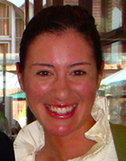 |
| Laura Corrales-Diaz Pomatto |
Laura Corrales-Diaz Pomatto, University of Southern California
Our lab focuses upon oxidative stress and adaptation, in particular the 20S proteasome and the mitochondrial Lon protease. My research focus is centered upon understanding how the adaptive response of both these proteases change with age in the model organism Drosophila melanogaster. In both instances, the ability of D. melanogaster to adapt is robust in young females, but declines with age. I am currently exploring methods of potential ways to restore adaptive capacity in the aged fruit-fly.
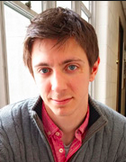 |
| David Schnel |
David Schnell, University of Kentucky
Approximately 90 years ago, Otto Warburg observed an increase in glycolysis among amply oxygenated tumor cells and introduced the concept of aerobic glycolysis to the field of cancer metabolism. However, after near a century of research, the underlying causes of aerobic glycolysis are yet to be understood. My research investigates the origins of aerobic glycolysis through the lens of MnSOD deficiency, common in many early cancers. I am teasing apart the metabolic responses to decreased MnSOD through stable isotope resolved metabolomics (SIRM) and building a bridge from redox environment to the origins of the Warburg effect.
 |
| Phillip Wages |
Phillip Wages, University of North California
I am interested in mechanistic toxicology within the scope of how environmental exposures impact human health. Through my work I have seen a broad underutilization of redox biology in many toxicology studies, and because of this I have a strong interest to integrate these two fields better. I am currently driven to understand the role of hydrogen peroxide and protein sulfenylation in air pollutant-induced perturbations of cellular signaling. However, I plan to dedicate my future efforts to the broader field of redox proteomics by identifying novel redox proteins and assess their potential role in pathophysiology.
SfRBM Members can click here to take part in the Trainee Council Elections
— Published
Category: SfRBM Member Profile
Part 1 of 2 featuring Council Trainee Candidates
Edward Moreira Bahnson, Northwestern University
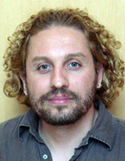 |
| Edward Moreira Bahnson |
I started my scientific training working with Dr. Radi in the chemistry and biochemistry of reactive species. During my graduate work I focused on redox biology of the vasculature studying the biochemistry of cobalamin and reactive species in the endothelium. As a postdoctoral fellow, I have focused in the redox signals that drive the development of neointimal hyperplasia in the injured vasculature. I’m interested in the development of redox-based therapies for the inhibition of neointimal hyperplasia, as well as understanding the molecular mechanisms of the altered redox environment after arterial injury. In particular I’m interested in S-nitrosylation and NOX-dependent signaling.
Kim Dunham-Snary, Queen's University - Canada
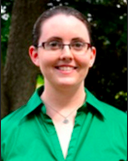 |
| Kim Dunham-Snary |
I am interested in how the mitochondrion, and specifically, mitochondrial DNA (mtDNA), influence susceptibility to disease. Known racial disparities exist for numerous pathologies including cardiovascular disease, metabolic diseases and even some cancers. Since the mitochondrial genome varies between geographical populations, it may be a substantial contributing factor to both the onset and severity of these and other pathologies. My previous work focused on mtDNA sequence variation and body composition as it relates to obesity and metabolic disease. My postdoctoral research will include investigating mtDNA structure and organelle dynamics in pulmonary arterial hypertension (PAH) and lung cancer.
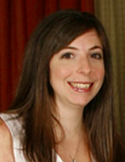 |
| Sam Giordano |
Sam Giordano, University of Alabama at Birmingham
My research interests include mitochondrial function and signaling, ROS, and inflammation in rat and pig models of vascular injury. Briefly, interleukin 8 (IL8) is upregulated during vascular injury and by overexpressing IL8 receptors on endothelial cells (ECs), and these ECs target to the sites of injury. Intravenous transfusion of the ECs overexpressing IL8 receptors into rat models have shown targeting to sites of injury, decreases in inflammatory cytokines and attenuation of vascular remodeling. Furthermore, we intend to determine the effects of alterations in the inflammatory cascade on ROS signaling and mitochondrial function during vascular injury.
SFRBM Members can click here to take part in the Trainee Council Election
— Published
Category: SfRBM Member Profile